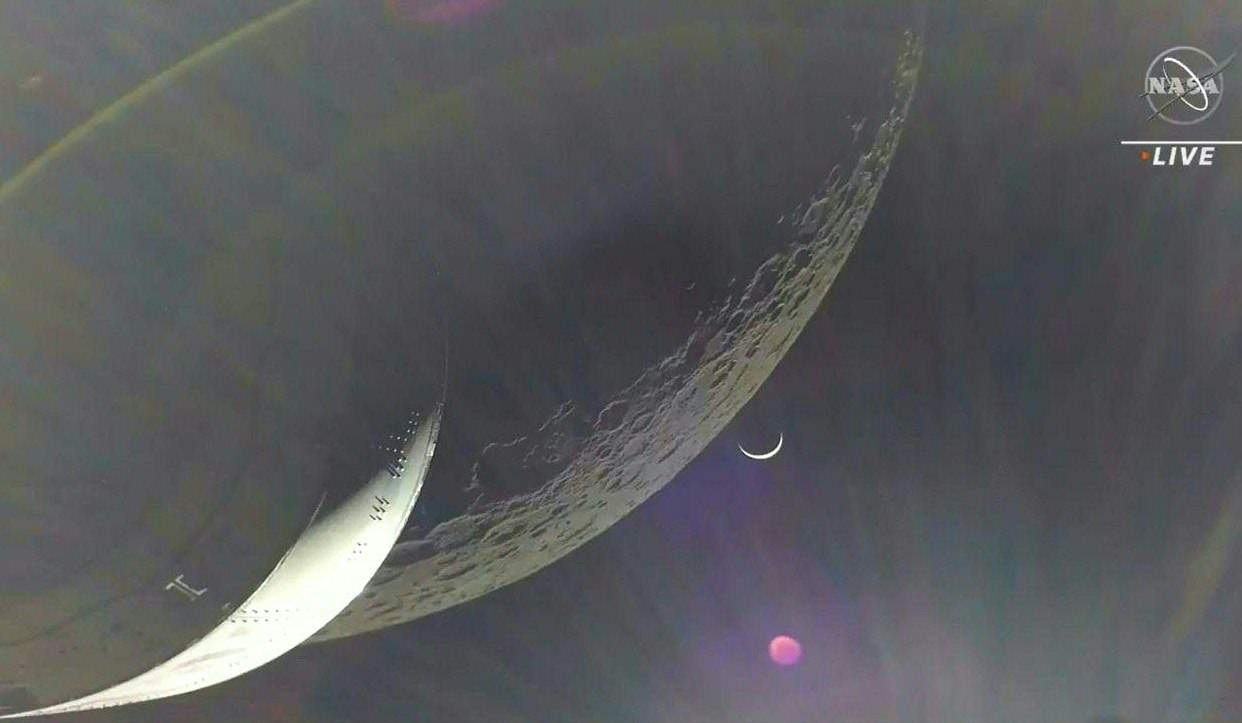The European Service Module, which powers the capsule, fired its main engine for over three minutes to put the gumdrop-shaped Orion on course for home.
“We couldn’t be more pleased about how the spacecraft is performing,” Debbie Korth, Orion Program deputy manager, said later.
As spectacular footage flashed on their screens once communication was restored, she told a news conference, “everybody in the room, we just kind of had to stop and pause, and just really look — Wow, we’re saying goodbye to the moon.”
Monday’s was the last major maneuver of the mission, which began when NASA’s mega Moon rocket SLS blasted off from Florida on November 16. From start to finish, the journey should last 25 and a half days.
Orion will now make only slight course corrections until it splashes down in the Pacific Ocean off San Diego on Sunday, December 11 at 9:40 am local time (1740 GMT). It will then be recovered and hoisted aboard a US Navy ship.
Earlier in the mission, Orion spent about six days in “distant retrograde orbit” around the Moon, meaning at high altitude and traveling opposite the direction the Moon revolves around Earth.
A week ago, Orion broke the distance record for a habitable capsule, venturing 280,000 miles (450,000 kilometers) from our planet.
Once it returns to Earth, Orion will have traveled more than 1.4 million miles, said Mike Sarafin, the Artemis mission manager.
Re-entry into Earth’s atmosphere will present a harsh test for the spacecraft’s heat shield, which will need to withstand temperatures of around 5,000 degrees Fahrenheit (2,800degrees Celsius) -– or about half the surface of the Sun.
Under the Artemis program — named for the sister of Apollo in Greek mythology — the United States is seeking to build a lasting presence on the Moon in preparation for an onward voyage to Mars.
Artemis 2 will involve a crewed journey to the Moon, once again without landing.
The first woman and next man are to land on the lunar south pole during Artemis 3, which is set for no sooner than 2025, though likely significantly later given timeline delays.








